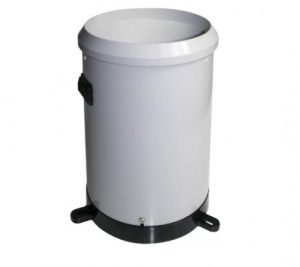A rain gauge is a tool that measures the amount of precipitation falling. These units measure the amount of water deposited on a surface in millimetres or litres per square metre. If you’re interested in measuring rainfall, you can buy many different types of rain gauges. Some of them can be wireless and can store data for months. Others measure rainfall in millimetres, which makes them more accurate. For quality rain gauges, visit https://instrumentchoice.com.au/instrument-choice/weather-stations/rain-gauges now.
 A typical rain gauge is made of two stainless-steel buckets on a pivot, and the collecting funnel is located below the buckets. The buckets are designed to collect a specified volume of water at one time. A rain gauge typically measures 15cc, equivalent to 0.2mm of rainfall. Each tip of the bucket is counted by a data logger, which converts this to the total rainfall over the desired measurement period.
A typical rain gauge is made of two stainless-steel buckets on a pivot, and the collecting funnel is located below the buckets. The buckets are designed to collect a specified volume of water at one time. A rain gauge typically measures 15cc, equivalent to 0.2mm of rainfall. Each tip of the bucket is counted by a data logger, which converts this to the total rainfall over the desired measurement period.
Analog and digital rain gauges
There are many differences between an analog and a digital rain gauge. An analog rain gauge is not as accurate as a digital rain gauge. Rather than using a simple analog display, a digital rain gauge has several sophisticated gauges that give you a more accurate rainfall reading. This feature makes a digital rain gauge a valuable tool for weather enthusiasts and meteorologists. Whether you choose a digital or analog rain gauge, it’s important to know the differences between the two to make the right choice for you.
The Walnut Gulch Experimental Watershed in southeast Arizona was one of the first to implement digital rain gauges. The watershed is home to the world’s largest rain gauge network, and the first recorded rainfall there was in August 1953. The watershed operates 26 analog rain gauges at the Walnut Gulch Experimental Range and nine digital gauges in the Upper San Pedro River Basin. During monsoon season, the study used digital rain gauges for comparisons.
Monthly storage gauges
The accuracy of rainfall measurement is crucial in many hydrology applications. Observers have measured rainfall daily and monthly since the fourth century, but automatic recording gauges provide better temporal resolution. This finer resolution is vital for flood risk modelling and hazard warning systems. Monthly storage rain gauges provide the highest temporal resolution of any type of rain gauge. But, there is one problem with them. Many of them don’t record data properly, so they’re so unreliable.
Daily storage gauges make up most of the observation network in the UK. Their replacements are TBRs and Pluvio WRGs. Although both types have the same rim height, the Pluvio WRG is installed at a higher height, reducing aerodynamic effects. The rim height of these gauges is typically 0.305 m, which may introduce considerable inhomogeneity.
Wireless rain gauges
Wireless rain gauges can transmit a signal up to 100 feet away and store up to 24 months of rainfall history. Gardeners and farmers can use them to monitor the amount of water their plants and crops need. They even come with built-in alarms for when new rainfall is detected. To use them, you must calibrate them right out of the box. For more information, click the link below. This article will give you a brief overview of wireless rain gauges’ most popular brands and features. For quality rain gauges, visit https://instrumentchoice.com.au/instrument-choice/weather-stations/rain-gauges now.
Some models are easy to use, with an easy-to-read display. You can use them to keep track of daily, weekly, or yearly rainfall. To ensure you’re getting the most accurate readings, ensure that the rain gauge is level. Bugs can make their nests in the gauge. It is also important to keep the device clean, as they lose historical data every time the batteries are changed. However, the benefits of these devices are well worth the investment.
Tipping bucket rain gauge
Tipping bucket rain gauges have a relatively low cost and are incredibly reliable. They have an easy-to-install design, require minimal care and maintenance, and provide accurate rainfall measurements. The tipping bucket is designed by the National Weather Service and is a low-investment industrial rain gauge. The Global Water tipping bucket is easy to install and has a protective screen on the mouth, so no insects or foreign objects get inside.
A typical rain gauge is made of two stainless-steel buckets on a pivot, and the collecting funnel is located below the buckets. The buckets are designed to collect a specified volume of water at one time. A rain gauge typically measures 15cc, equivalent to 0.2mm of rainfall. Each tip of the bucket is counted by a data logger, which converts this to the total rainfall over the desired measurement period. For quality rain gauges, visit https://instrumentchoice.com.au/instrument-choice/weather-stations/rain-gauges now.
